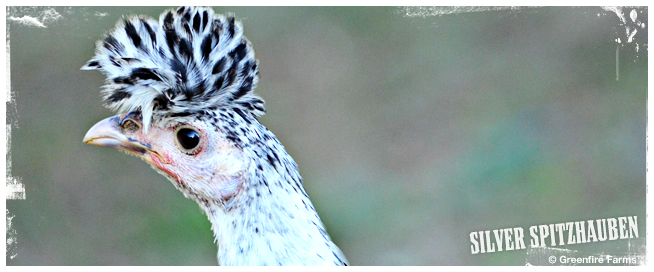Who doesn't want a chicken that looks like a dalmation with a Mohawk? The Appenzeller Spitzhauben is one of our most visually interesting breeds, and Greenfire Farms went all the way to Switzerland to find and import champion bloodlines.
| Item | 1+ | Quantity |
|---|---|---|
| Chamois Spitzhauben Day-Old Chick Unsexed | 19.00 | |
| Chamois Spitzhauben Eggs | 9.00 | Sold Out |
| Gold Spitzhauben Day-Old Chick Unsexed | 19.00 | |
| Gold Spitzhauben Eggs In stock: 5 | 9.00 | |
| Silver Spitzhauben Day-Old Chick Unsexed | 19.00 | |
| Silver Spitzhauben Eggs In stock: 4 | 9.00 | |
| Spitzhauben Day-Old Chick Assortment Unsexed | 15.75 | |
| Spitzhauben Assortment of Hatching Eggs | 8.00 | Sold Out |
Appenzeller Spitzhauben are small- to medium-sized chickens native to the Appenzell canton of northeast Switzerland near the German and Austrian borders. (Switzerland is comprised of 26 districts called cantons.) Appenzell is an alpine region with a strong tradition of herding and other agricultural enterprises. Spitzhauben are ceremonial hats worn as part of elaborate costumes by the women of the region, and they sport a large crest on the top of the bonnet. In about the 1500s a chicken breed emerged in the monasteries of Appenzell, and the birds had a forward-thrusting crest of feathers on their heads. It was only natural that the birds would be locally called Appenzeller Spitzhauben.
Appenzeller Spitzhauben fall within the class of large fowl but are usually small to medium size. They are very active foragers and for their size lay relatively large white eggs and usually in significant numbers. Fertility tends to be very high for this breed. The breed is also cold hardy. The Spitzhauben is completely unrelated to the much larger and differently-shaped Appenzeller Barthuhner chicken breed that was also imported by Greenfire Farms. The sole link between these breeds is that they were developed centuries apart in the same region of Switzerland.
Following World War II, a German prisoner of war who spent time in a military detention camp in Alabama returned to his native country and acquired some silver Spitzhauben. With the help of his friend, Dr. Albert McGraw, the German brought some hatching eggs to the United States when he returned to gain citizenship to this country. These eggs hatched what was to become the foundation stock of Spitzhauben in the United States.
Today Spitzhauben are very rare in the United States, and many members of the American gene pool have defects. For example, frequently the crest on the birds –which should be a forward-raking mohawk according to the breed standard– is instead often like a miniature version of a poofy Polish crest or sweeps backward. Other common defects include non-standard leg color (they should be blue), and a comb on the rooster that is not properly separated into the ideal split horn-type comb. Also, some American birds may have suppressed immune systems from inbreeding, and lymphoid leukosis, a disease that kills chickens, is common in the existing American Spitzhauben gene pool.
In 2013, Greenfire took an unusual step: We imported silver Spitzhauben even though this variety has been established in America for more than a half century. We made this extraordinary effort to help cure the defects in and fortify the limited gene pool of silver Spitzhauben in this country. We were lucky enough to import the offspring from a pair of silver Spitzhauben that recently took top honors at a national poultry show in Europe, and they meet the breed standard in a way that addresses many of the defects found in some American flocks. Given their scarcity, striking beauty, and propensity to produce lots of eggs, any poultry hobbyist should give serious consideration to keeping Spitzhauben in their backyard coop. You won't be disappointed.
Hatching Eggs - When hatching eggs from the Chamois Spitzhauben, you may hatch a chick that is dark brown or black and brown. These chicks develop the gold pattern and not the chamois pattern. These birds should not be used in a Chamois Spitzhauben breeding flock however they can be used in a Gold Spithzuaben breeding flock.
The merits of every bird should be assessed as they reach adulthood.
Appenzeller Spitzhauben fall within the class of large fowl but are usually small to medium size. They are very active foragers and for their size lay relatively large white eggs and usually in significant numbers. Fertility tends to be very high for this breed. The breed is also cold hardy. The Spitzhauben is completely unrelated to the much larger and differently-shaped Appenzeller Barthuhner chicken breed that was also imported by Greenfire Farms. The sole link between these breeds is that they were developed centuries apart in the same region of Switzerland.
Following World War II, a German prisoner of war who spent time in a military detention camp in Alabama returned to his native country and acquired some silver Spitzhauben. With the help of his friend, Dr. Albert McGraw, the German brought some hatching eggs to the United States when he returned to gain citizenship to this country. These eggs hatched what was to become the foundation stock of Spitzhauben in the United States.
Today Spitzhauben are very rare in the United States, and many members of the American gene pool have defects. For example, frequently the crest on the birds –which should be a forward-raking mohawk according to the breed standard– is instead often like a miniature version of a poofy Polish crest or sweeps backward. Other common defects include non-standard leg color (they should be blue), and a comb on the rooster that is not properly separated into the ideal split horn-type comb. Also, some American birds may have suppressed immune systems from inbreeding, and lymphoid leukosis, a disease that kills chickens, is common in the existing American Spitzhauben gene pool.
In 2013, Greenfire took an unusual step: We imported silver Spitzhauben even though this variety has been established in America for more than a half century. We made this extraordinary effort to help cure the defects in and fortify the limited gene pool of silver Spitzhauben in this country. We were lucky enough to import the offspring from a pair of silver Spitzhauben that recently took top honors at a national poultry show in Europe, and they meet the breed standard in a way that addresses many of the defects found in some American flocks. Given their scarcity, striking beauty, and propensity to produce lots of eggs, any poultry hobbyist should give serious consideration to keeping Spitzhauben in their backyard coop. You won't be disappointed.
Hatching Eggs - When hatching eggs from the Chamois Spitzhauben, you may hatch a chick that is dark brown or black and brown. These chicks develop the gold pattern and not the chamois pattern. These birds should not be used in a Chamois Spitzhauben breeding flock however they can be used in a Gold Spithzuaben breeding flock.
The merits of every bird should be assessed as they reach adulthood.
| Egg Color | white |
| Egg Size | Medium |
| Average number of eggs per year | 150 - 180 |
| Gamefowl | no |
| Country of Origin | Switzerland |
| Also called | Appenzeller Spitzhauben |
| Cold tolerant | yes |
| Year of import(s) | 2019 |
.jpg)
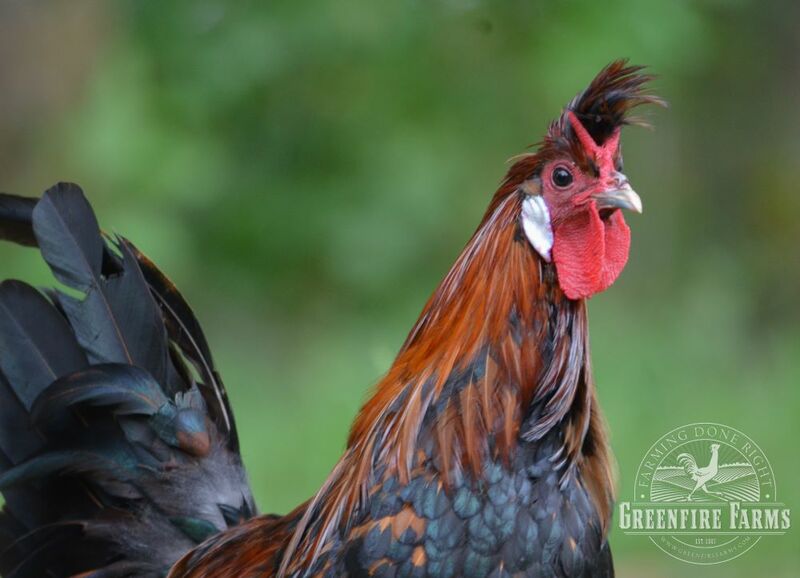
.jpg)
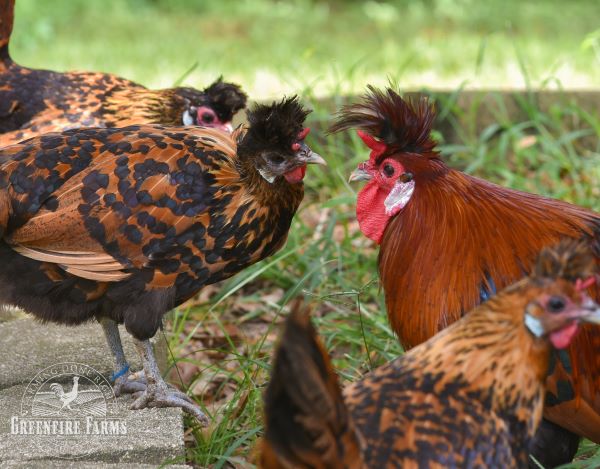
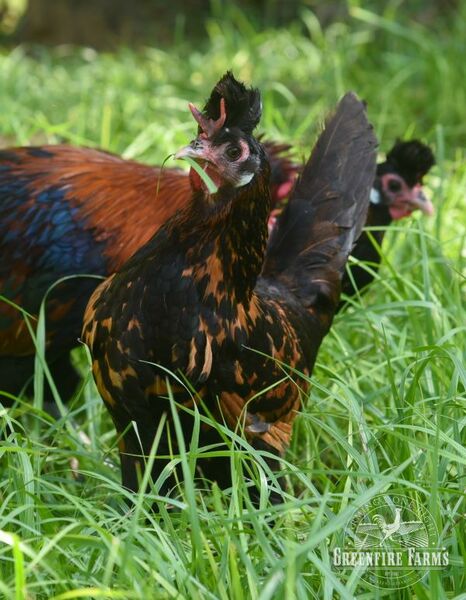
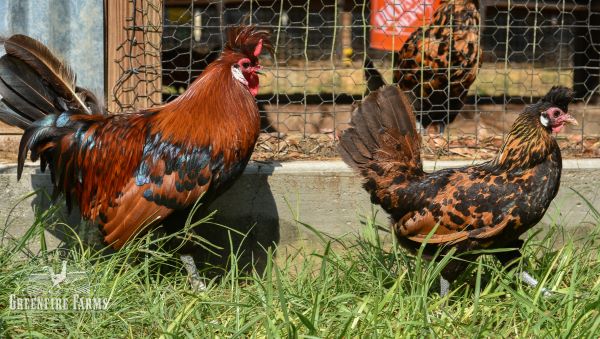
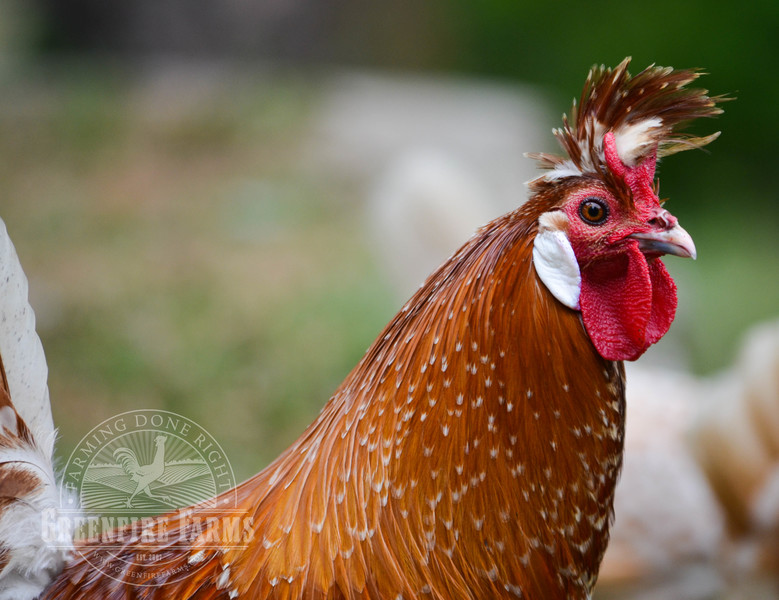
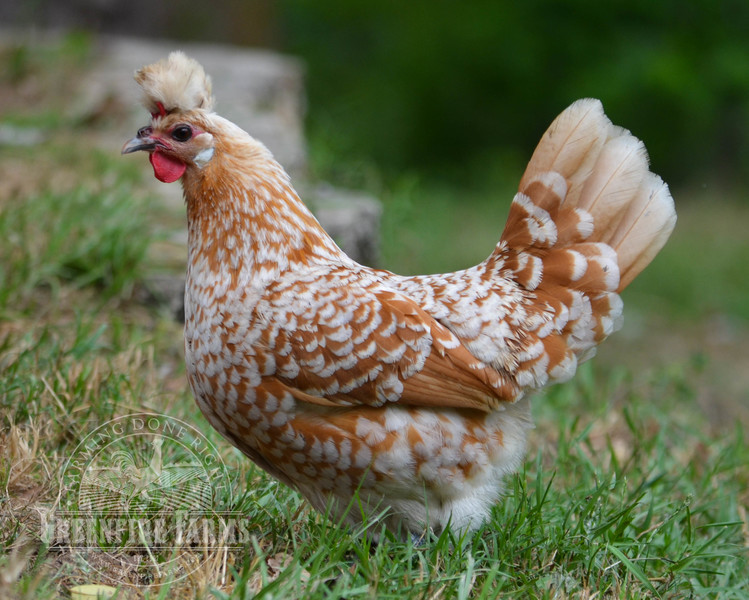
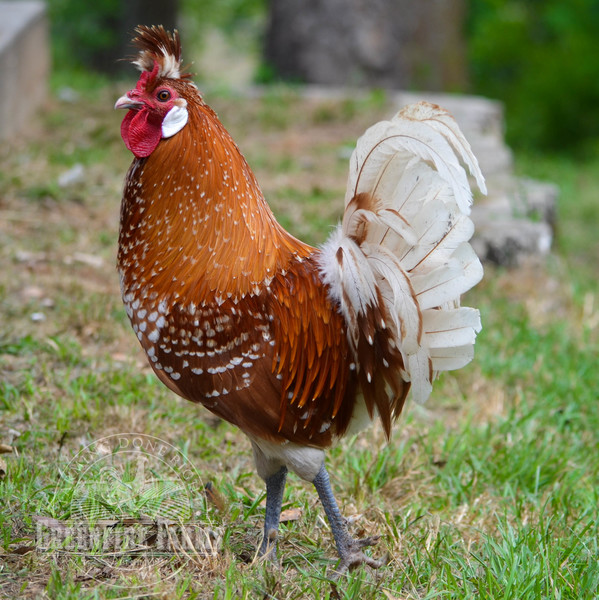
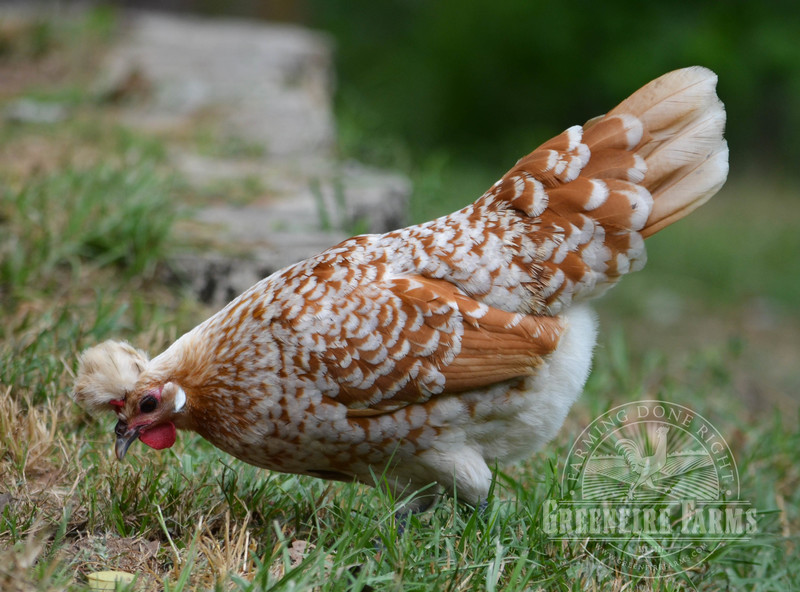
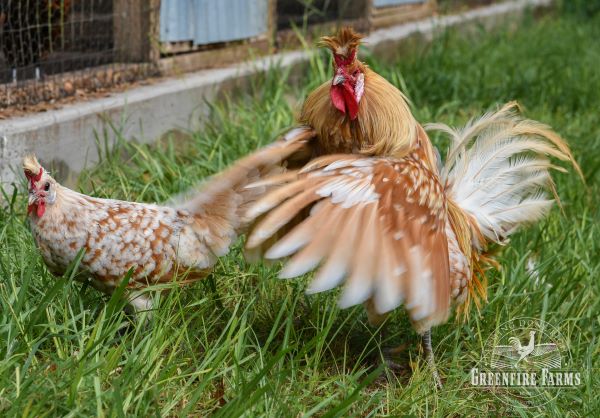
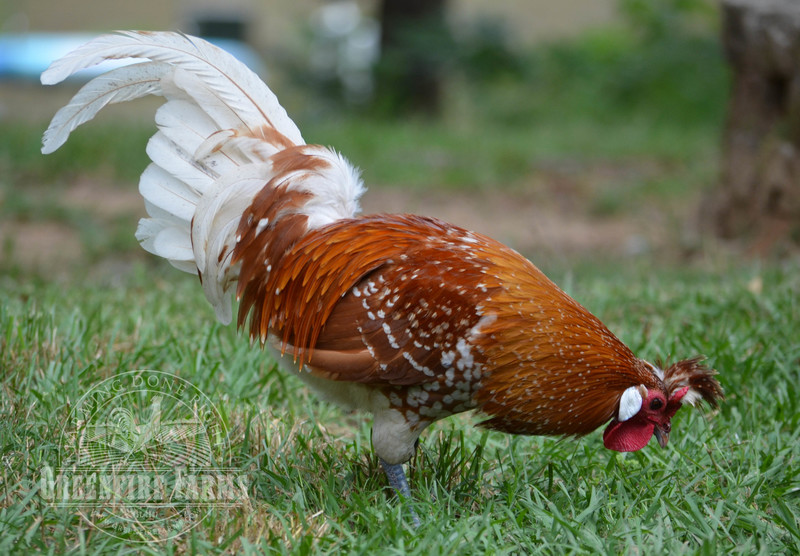


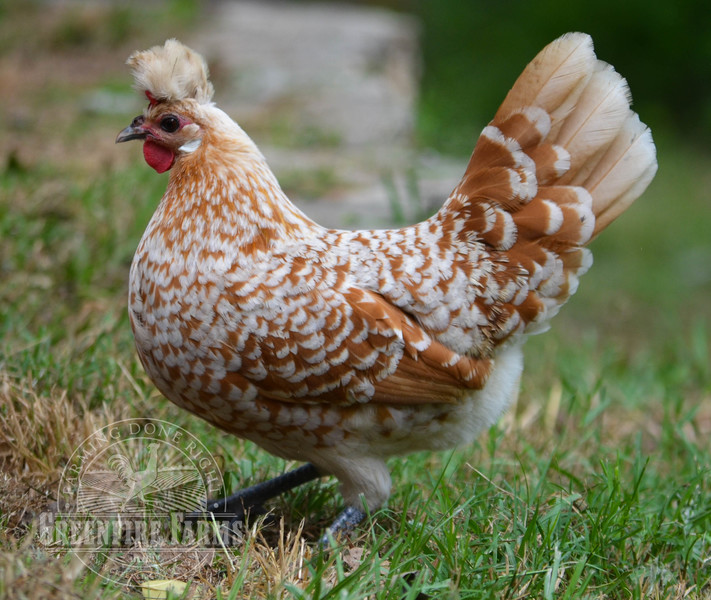

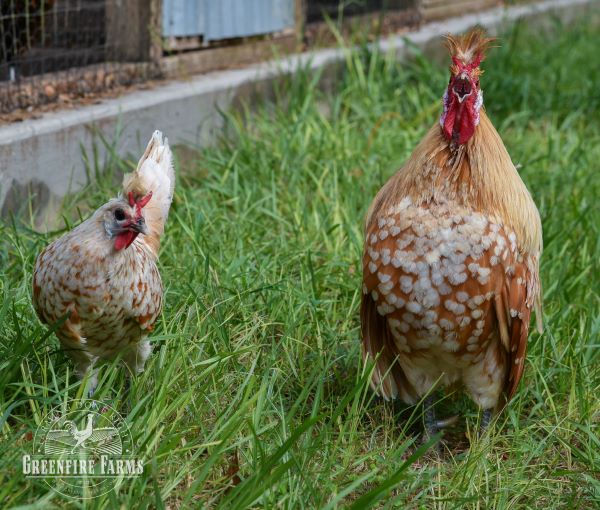
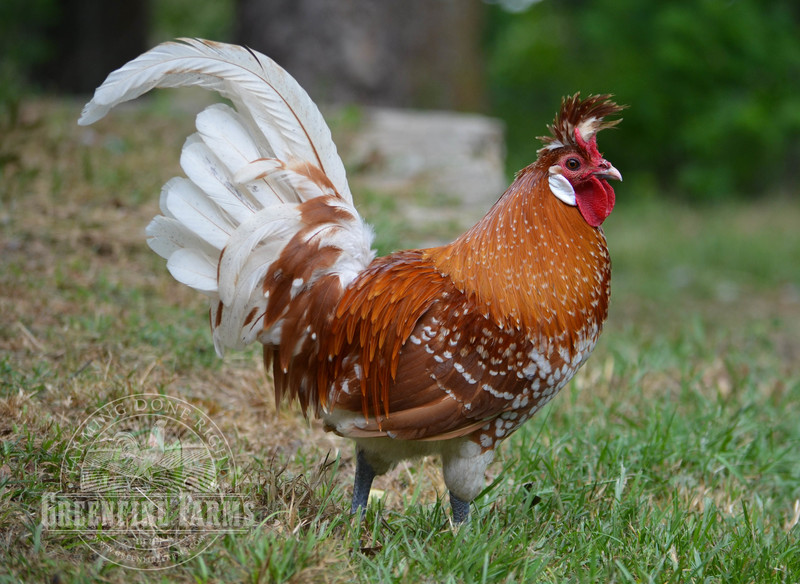
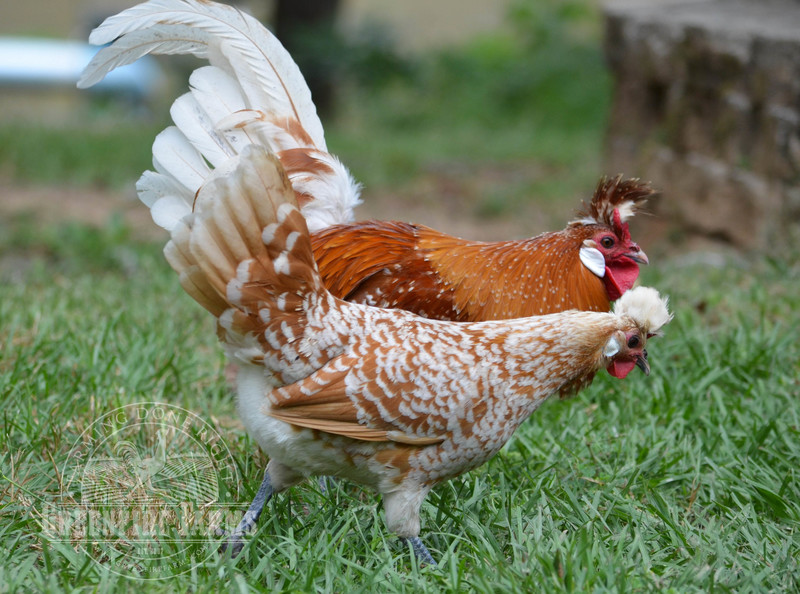
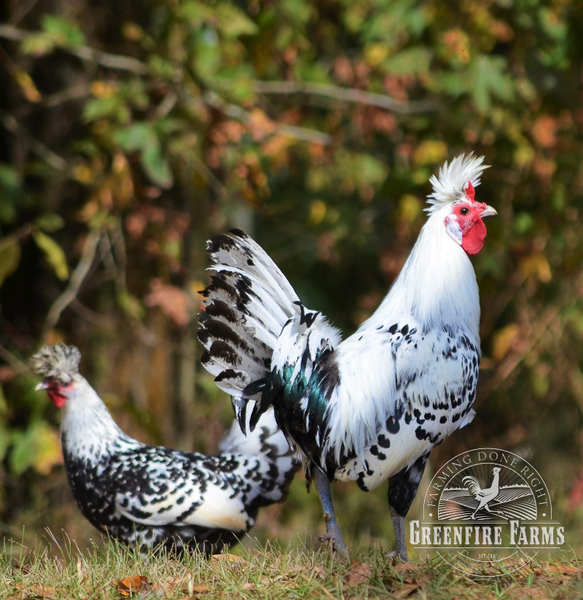
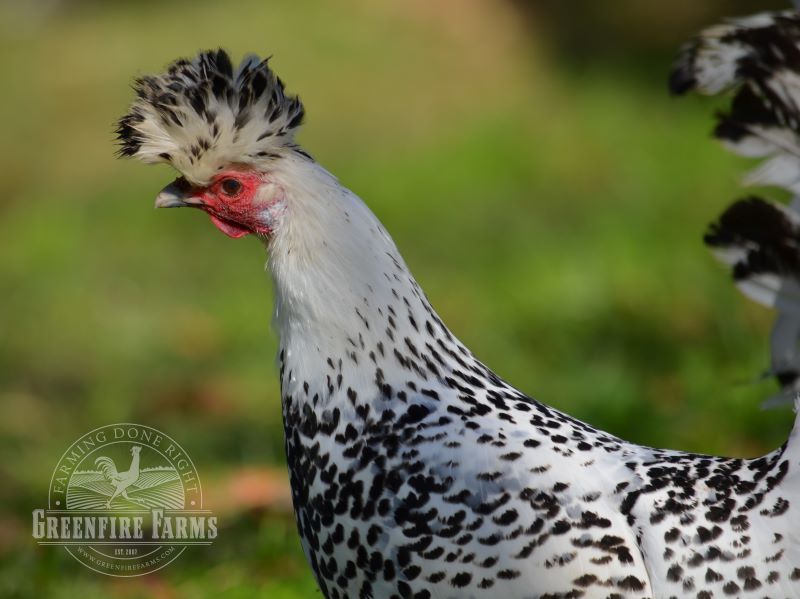
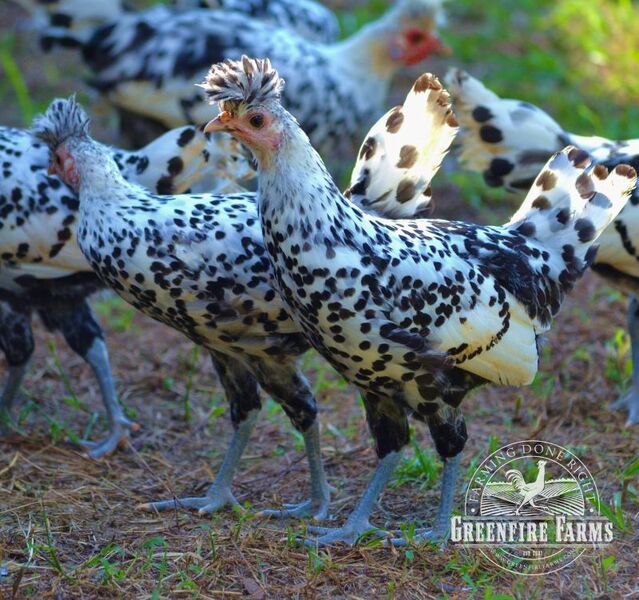
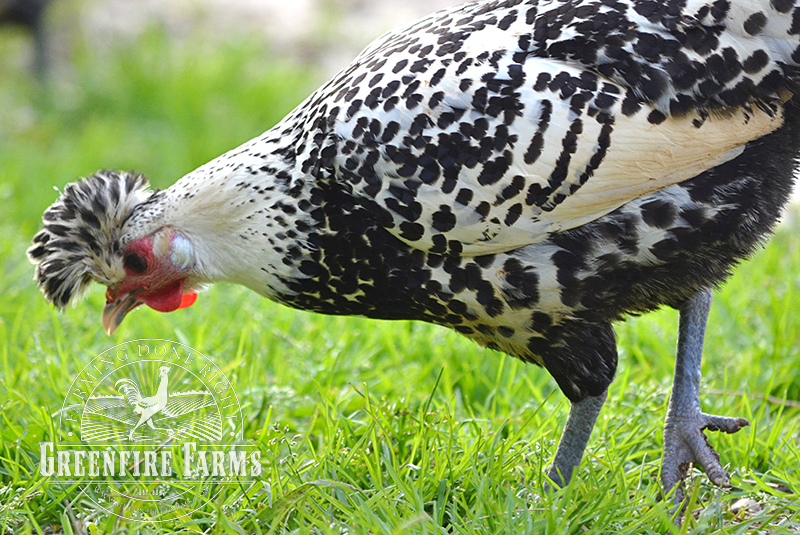
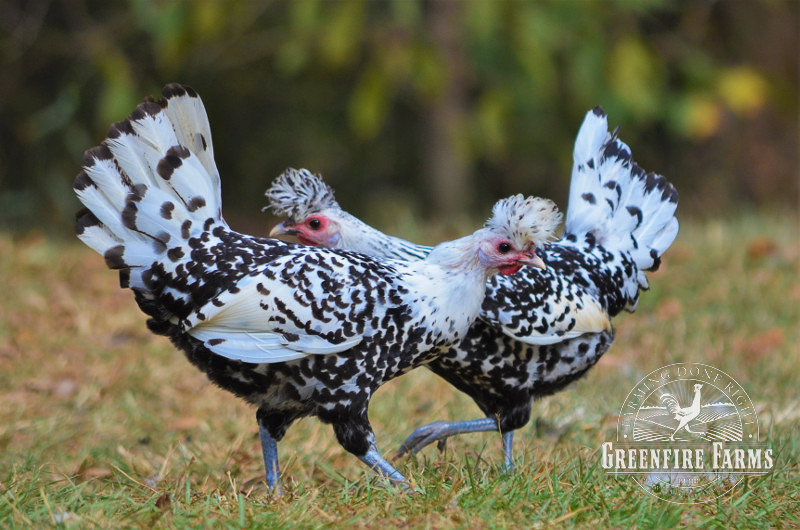
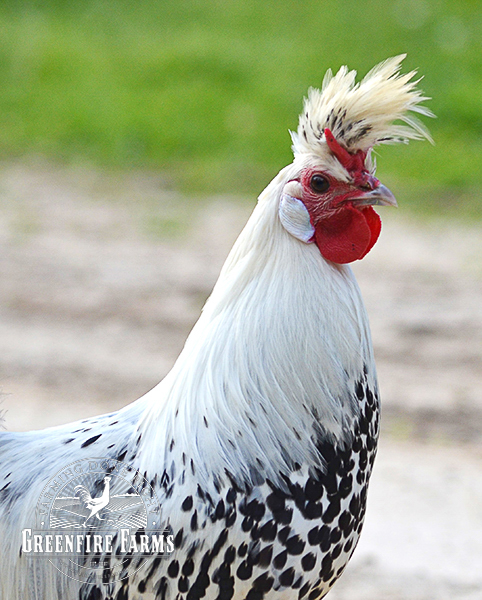
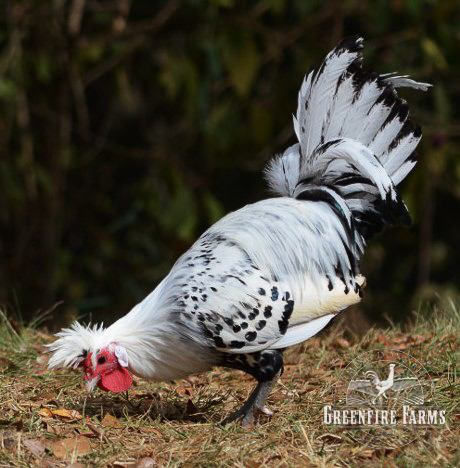
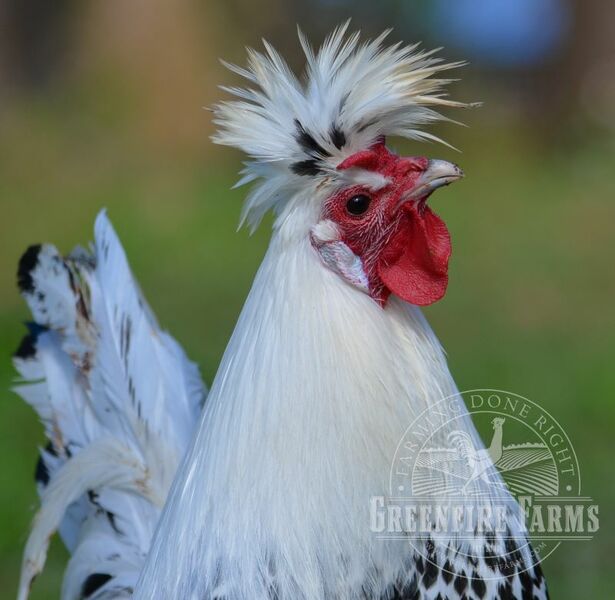
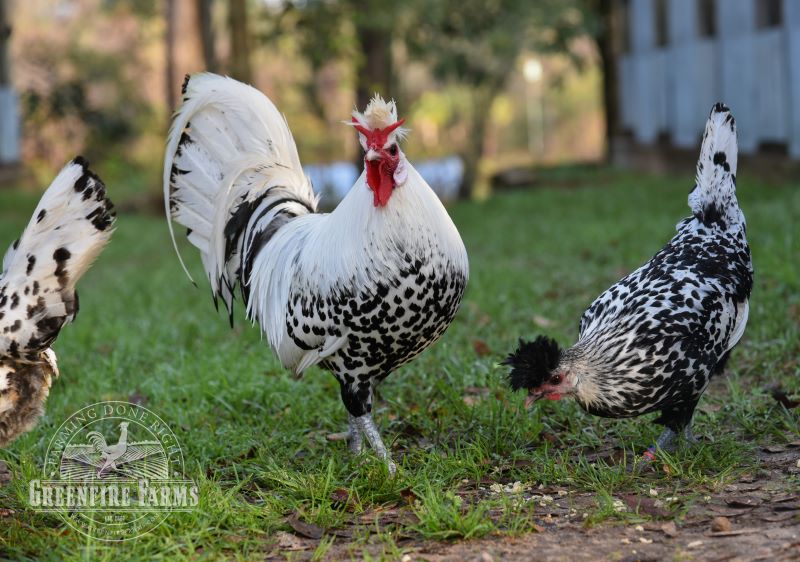
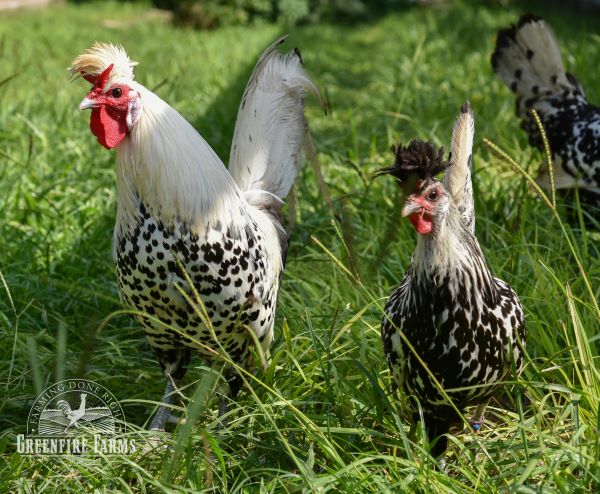
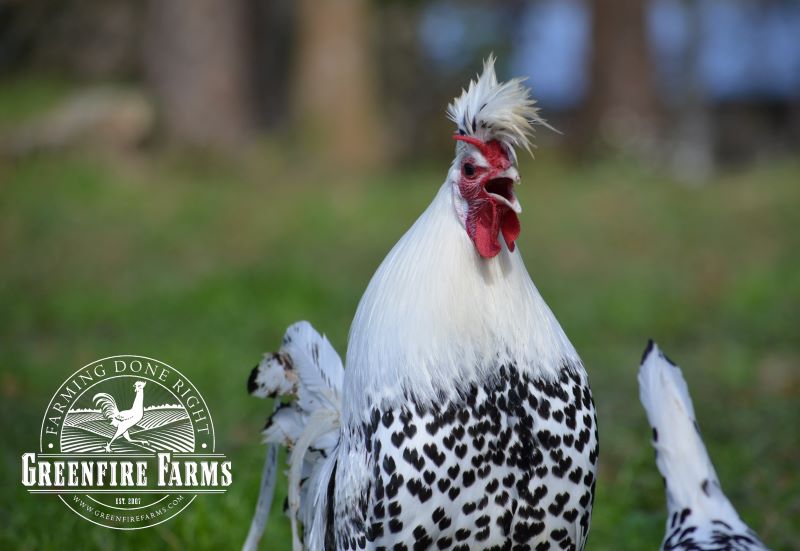
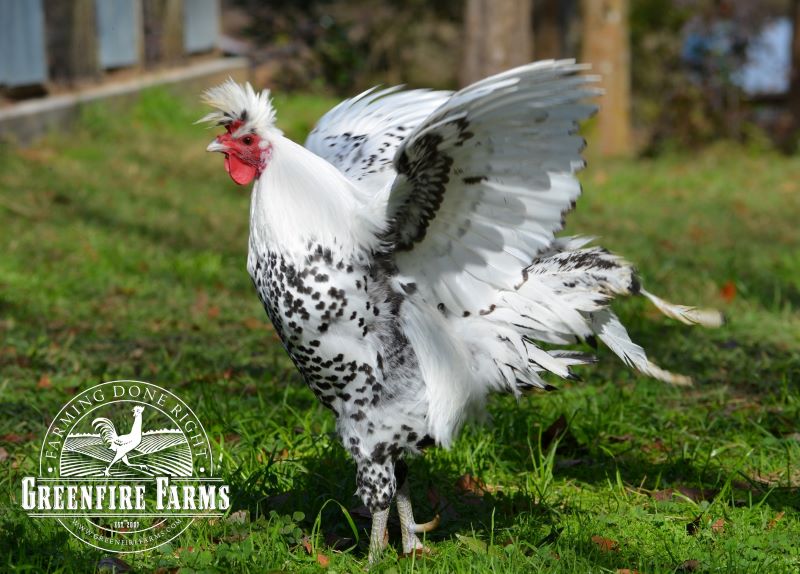

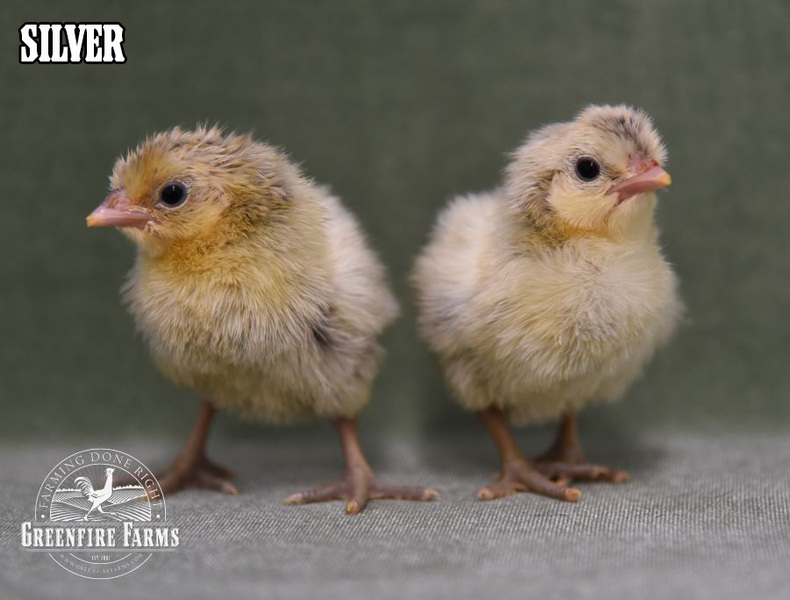

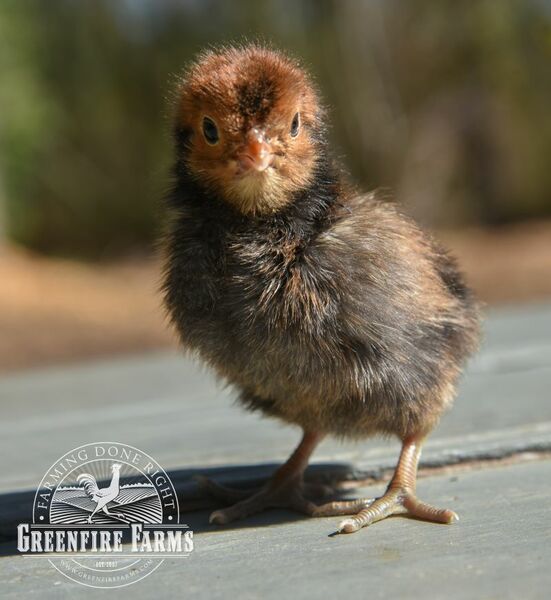

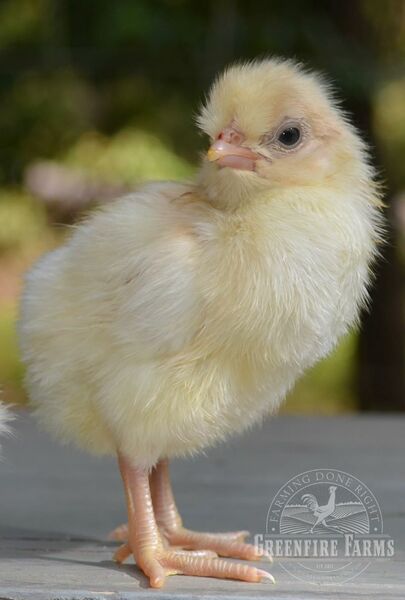
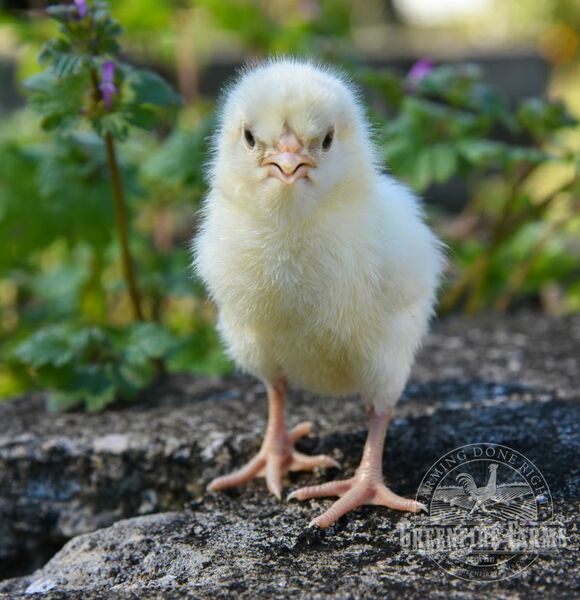
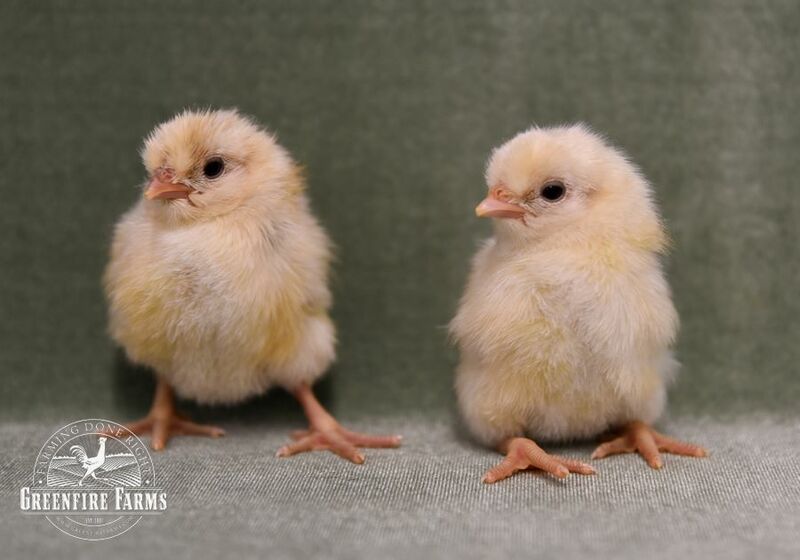
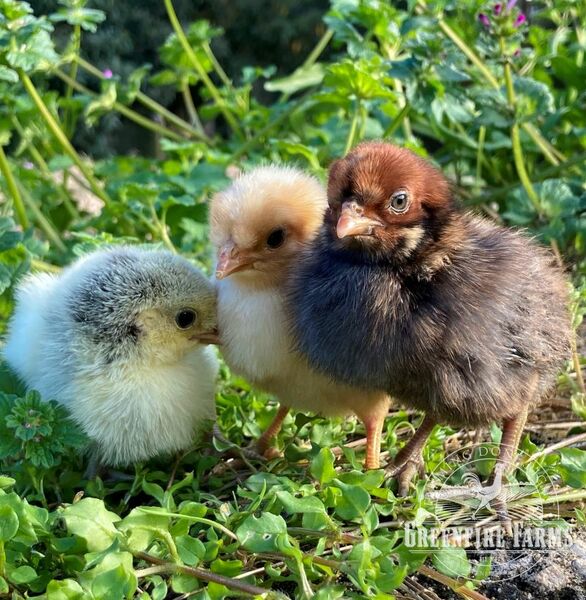
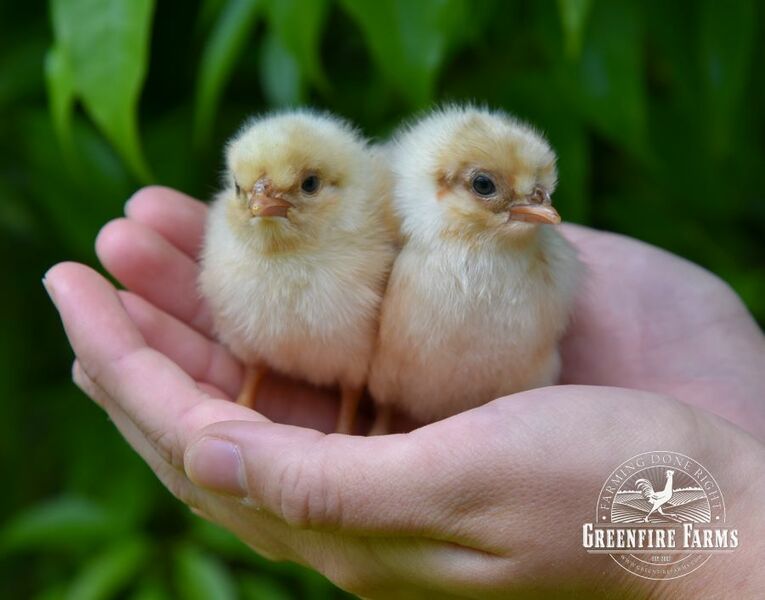


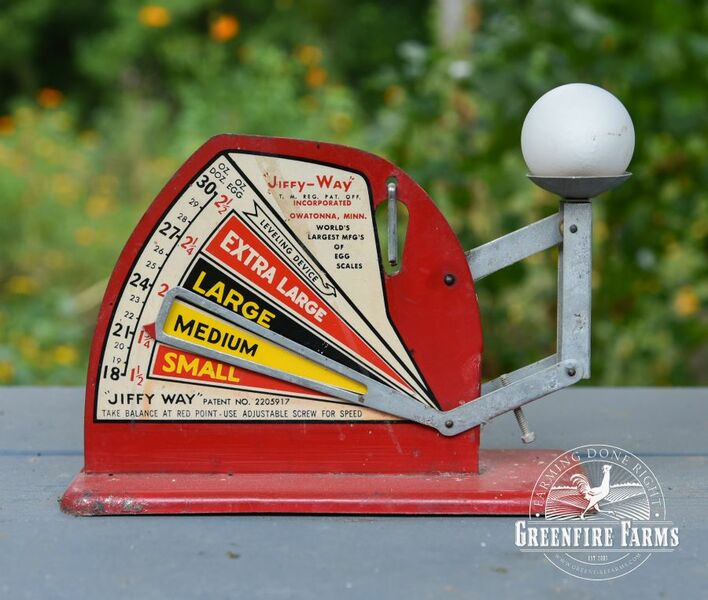

 Cart:
Cart: 

